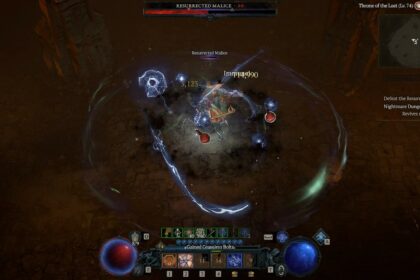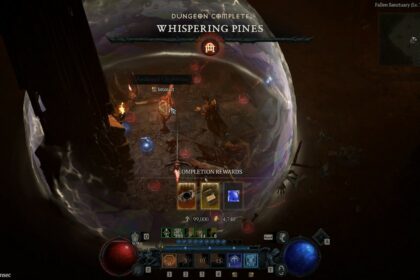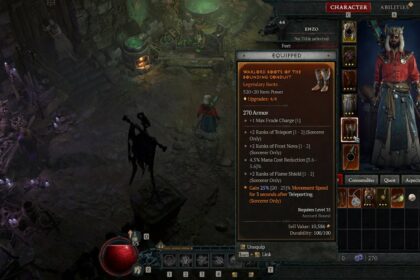In Diablo 4, nightmare dungeons signify the first stepping stone toward the endgame. It gives you access to items far greater than what you already have.
Reaching this point of the game is even the turning point for some builds to activate, as it gives you more access to rarer uniques and legendaries.
This short guide will show you how to unlock and farm these nightmare dungeons efficiently until the next tier.
Unlocking Tier 3 or Nightmare Difficulty
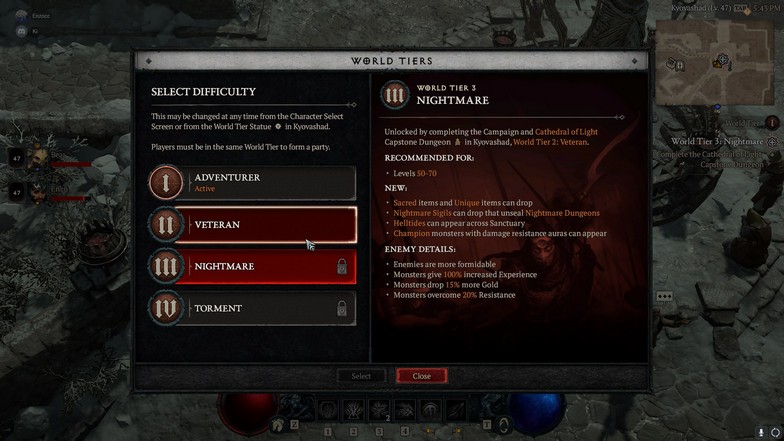
To unlock tier 3 or nightmare difficulty, you’ll need to finish the campaign first. Since nightmare difficulty sets the monsters to level 50 and above, you should unlock it around that player level.
However, if you finish the campaign fast enough, you’ll see the tier 3 world difficulty quest under your priority quests.
It requires you to finish the Cathedral of Light capstone dungeon. The dungeon will scale to a minimum of level 50 monsters, so if you are lower than that level, they won’t scale down any lower.
However, you can clear the capstone dungeon with the right gear and a good leveling build as early as 45.
Once you have finished the capstone dungeon, you can freely change the difficulty to tier 3 now.
Farm Dungeons Until You Get A Sigil
When you start tier 3 difficulty, you’ll be introduced to nightmare dungeons and Helltide. To access nightmare dungeons, you’ll need to get a sigil first. These sigils are found in Grim Favor rewards from the Tree of Whispers.
I recommend finishing dungeons that reward Grim Favors, so you end up with a bit of extra loot.
Once you get a sigil, use it, and it’ll open up a dungeon for you. Check your map and pin the location. Run the sigil, dungeon, or map (the community calls it differently, but they are the same), but here are some tips first.
Once you get your first sigil, they’ll frequently drop inside the nightmare dungeons.
Things to Know Before Using the Sigil
Look at the modifiers or affixes of the sigil
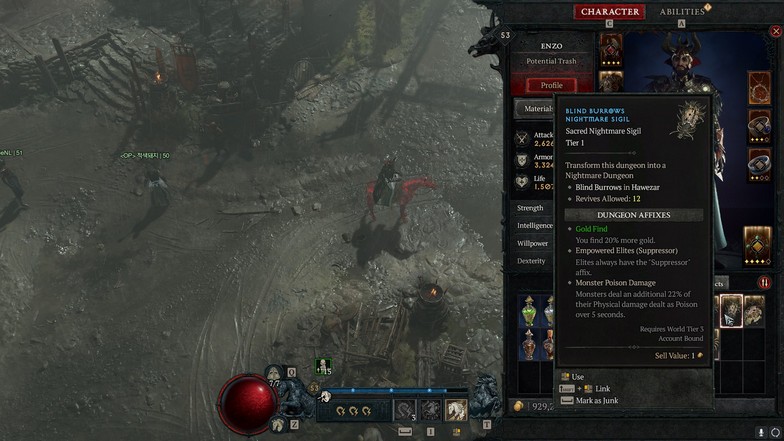
Sigils have different modifiers and affixes. The sigils alter the dungeon’s monster power and also add unique mechanics to the dungeon.
At this point, you probably haven’t fully completed your build. You might have weaknesses in certain elements, and the affixes can make it even harder.
Look for the affixes in the sigils and avoid the ones you’ll have a problem with. Some affixes, such as increasing elemental/physical damage, even buff your character.
The best affixes are probably magic and gold find, which adds more items or more gold to the dungeons.
Read the affixes before you run them. It is worth noting that sigils also have different tiers. The higher the tier, the higher the monster level. You want to run sigils closer to your level or player power.
Bad sigils
When you have sigils you can’t run, you can easily salvage them. They give you back materials, which you can use to craft more sigils.
When you craft sigils, you can choose the tier range of the sigil, so you can control the difficulty of the dungeons. You can’t control how the affixes roll, though.
Don’t throw these sigils away. They even have their own inventory tab, so it wouldn’t be much of a bother.
Dungeon layouts
Since sigils turn existing dungeons into a nightmare dungeon or higher, the layout remains the same.
If you have a favorite dungeon layout, you can use sigils specific to that dungeon and run them.
With more experience, you’ll get a hang of all the dungeon layouts, and you’ll practically memorize every single one of them because of how long the grind is anyway.
Unlocking waypoints
If you are going to be running a ton of nightmare dungeons, you would want to explore the whole map to see all the dungeons.
Some dungeons are locked behind strongholds on the map. If you haven’t finished a stronghold that unlocks a dungeon, the sigil connected to the same dungeon cannot be used.
Take this time to finish all strongholds and unlock the waypoints. These waypoints make it much easier to fast travel when running hundreds of dungeons.
Once you get all the fast travel waypoints, you can just mount up and run toward the dungeon after using a sigil.


